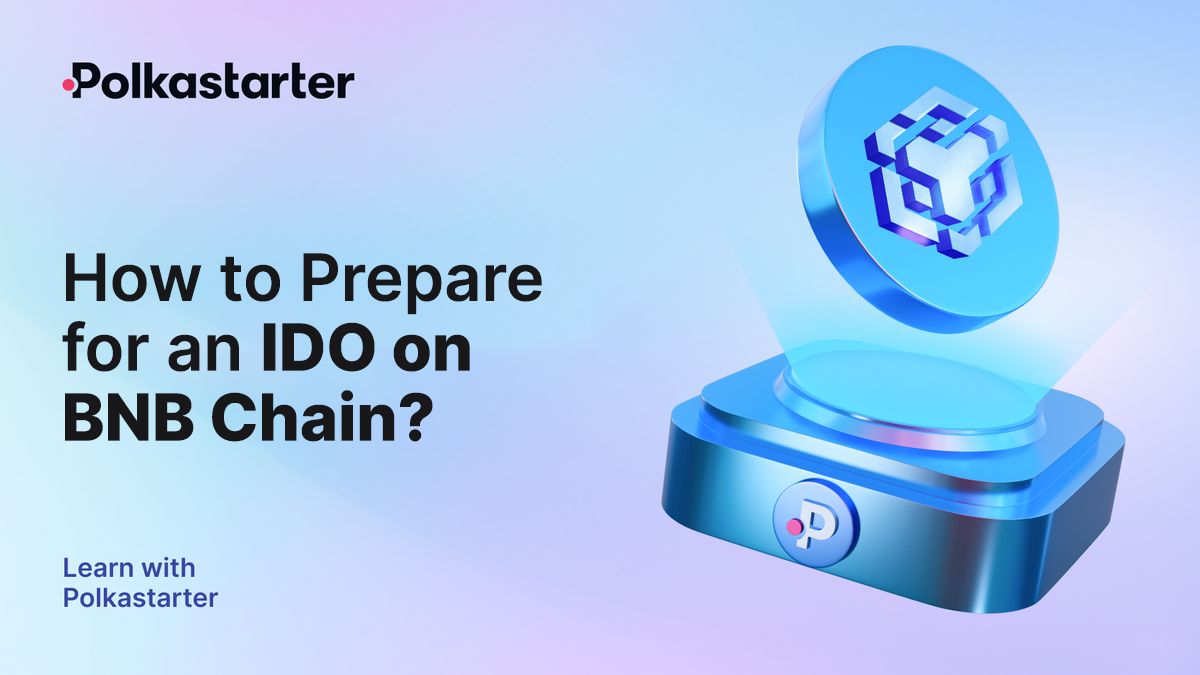
Tracing the Evolution of Early-Stage Fundraising
From Bank Loans to Web3 Fundraising Platforms
Whether you're launching a disruptive tech product, kickstarting a groundbreaking research project, or establishing a web3-based decentralized application, securing funds remains at the crux of turning your vision into reality. The landscape of fundraising has witnessed a paradigm shift in recent years. Here's an overview of this evolution, guiding you from traditional banking to the futuristic realm of web3.
Before diving into methods, it's essential to understand the various stages of fundraising:
Private/Pre-seed Stage: This is usually the first influx of investment, often from founders, family, or close friends. At this stage, the concept is being validated.
Seed Stage: This is where professional investors, such as angel investors or early-stage VCs, step in. The product might be in beta testing or in its early form.
Series A, B, C...: As a project gains traction, it might go through multiple rounds of funding, each intended to achieve certain milestones or market expansions.
Public: This entails launching an IPO (Initial Public Offering), where shares of the company are sold to the general public on a stock exchange. IDOs (Initial Decentralised Offerings) and any other form of Public Token Sale also classify under this stage.
Now we are ready to look into the variety and evolution of funding options. Let’s go!
Bank
Historically, turning to banks was the most straightforward route for fundraising. A budding entrepreneur would present their business plan to a bank, hoping to secure a loan. Usually suitable for traditional businesses with physical assets or clear revenue streams.
Pros:
- Established infrastructure.
- Offers a structured repayment plan.
Cons:
- Requires collateral or some form of security.
- Relatively high-interest rates.
- Often hesitant to fund risky or innovative ventures.
VC/Angel
As the tech revolution gained momentum, Venture Capitalists (VCs) and Angel Investors emerged as a dominant force in funding startups. These are especially prominent during the Seed and Series A stages. VC/Angel investing is versatile, suitable for web2 platforms, early-stage tech startups, and web3 initiatives alike.
Pros:
- Typically brings industry connections and expertise along with the money.
- A more considerable amount of funds compared to traditional loans.
Cons:
- Can demand a significant equity stake in the startup.
- Potential misalignment of long-term goals.
Crowdfunding
Platforms like Kickstarter and Indiegogo enabled entrepreneurs to pitch their idea to the public, gathering many small contributions from enthusiastic backers. Ideal for innovative web2 projects, physical products, or creative endeavours.
Pros:
- Validation of product-market fit.
- No equity is usually given away.
- Creates a community of early adopters.
Cons:
- Platform fees can be significant.
- Success heavily depends on marketing efforts.
- If the campaign doesn’t meet its goal, funds might not be disbursed.
- Early supporters don’t have a stake in the project’s success (no ownership).
Web3 Fundraising Platforms
With the rise of blockchain technology, decentralized financing methods have emerged, with Web3 fundraising platforms being the latest sensation. These platforms allow early-stage blockchain-based projects to raise capital by selling tokens to the public, bypassing traditional fundraising routes. Best for web3 projects, particularly those with a token model.
Pros:
- Direct access to a global pool of investors.
- Token offerings can serve multiple purposes, such as governance or utility within the platform.
- Facilitates community involvement and ownership.
Cons:
- Regulatory uncertainties.
- Token price volatility can impact project stability.
- Due diligence is paramount as the space is still maturing.
- Not owning equity, but tokens in the project.
Blockchain Revolution in Early-Stage Fundraising
In the wake of Web3 platforms, blockchain is revolutionizing the way startups raise funds. Through tokenization, assets transform into “digital shares”, broadening investment opportunities. Smart contracts eliminate intermediaries, ensuring the speed, cost-effectiveness and reliability of both the macro and microtransactions. As a result, startups and investors from around the globe can connect more effortlessly than ever. Secondary markets enhance investment liquidity by allowing early investors to enter or exit at any time, and the blend of decentralized platforms with voting systems empowers stakeholders to influence the development of the projects. This isn't merely a technological advancement — Web3 signifies a cultural shift, promising a more inclusive and transparent future for venture capital.
Pros:
- Democratized Access: Tokenization ensures that high-value assets, previously accessible only to wealthy investors, are now within reach of the broader public.
- Automated Trust: Smart contracts minimize the need for intermediaries, ensuring smooth, transparent transactions.
- Globalized Market: Startups and investors from different regions can easily connect.
- Increased Liquidity: Secondary markets allow early-stage investors to trade their stakes, enhancing the liquidity of traditionally illiquid investments.
- Empowered Community: Voting mechanisms and decentralized platforms give voice to all stakeholders, enabling collective decision-making.
Cons:
- Technological Barriers: The need for understanding blockchain and token mechanics might deter some traditional investors.
- Token Economic Design: tokenomics may not always be designed in the most sustainable way since it's often created in a very early growth phase.
- Security Concerns: As with any digital platform, there's a risk of hacks or breaches, though many platforms prioritize top-notch security measures.
- Maturity of Projects: Given the ease of fundraising, some projects may not be fully vetted or mature, increasing investor risk.
The blockchain space, though still in its youth, is expanding rapidly. As it matures, we expect many of its current challenges to be addressed. Given its inherent advantages and the promise it holds, we're convinced it’s the way to go for the future of fundraising. Entrepreneurs and investors alike should pay close attention, as this evolution represents more than technological progress—it's a new paradigm in fostering innovation.
Other Fundraising Options
The landscape of fundraising has seen an influx of diverse strategies over the years, expanding the horizons for startups and projects. Beyond traditional banks, VC/Angel investments, crowdfunding, and Web3 launchpads, here's a roundup of some other noteworthy options:
Grants: Various institutions, be it governmental or private, frequently offer grants, especially to initiatives in technology, research, environment, or social spheres. The appealing part? They're non-repayable.
Bootstrapping: Entrepreneurs can take matters into their own hands by funding ventures from personal savings. It preserves full ownership but also places the risk squarely on the founder's shoulders.
Corporate Sponsorship or Strategic Investment: Sometimes, bigger players in the industry will see the potential in a startup's offering. They might provide funding if the venture aligns with their strategic objectives or offers them some edge in the market.
Accelerators and Incubators: Designed as launchpads for startups, these entities offer a mix of mentoring, investment, and resources, typically in exchange for equity. Our partner Poolside Accelerator is an example of Web3 Accelerator.
Debt Financing: Beyond traditional loans, innovative models such as revenue-based financing are gaining traction. Here, the repayment structure ties into the company's revenue streams.
Convertible Notes: Short-term debt instruments that metamorphose into equity during subsequent financing rounds.
SAFE (Simple Agreement for Future Equity): A nod to convertible notes but without interest rates or maturity dates, these agreements pledge to convert the invested amount into equity during future financing events.
Partnerships and Joint Ventures: Collaborative in nature, these alliances provide both funds and additional resources, drawing strength from combined capabilities.
Licensing: Holding a proprietary edge, like patents, trademarks, or copyrights? License your unique product or technology to other firms, opening up channels for royalties or upfront payments.
Pre-Sales: Direct and effective. If you have a tangible product or service in the offing, pre-selling can accumulate the initial capital required to kick things off. In the web3 context, "token pre-sales" or "pre-ICO sales" refer to the sale of tokens to early investors or participants before the official public sale or Initial Coin Offering (ICO) begins, typically at a discounted rate to incentivize early investment.
Initial Exchange Offerings (IEOs): For the crypto-savvy, IEOs are a fundraising avenue where crypto exchanges play middlemen, hosting token sales on their platforms, thus adding a layer of credibility.
Initial Litigation Offerings (ILOs): A novel approach, where projects vend rights to prospective litigation settlements. Investors essentially buy a stake in the potential future financial recovery from the lawsuit. If the lawsuit is successful and results in a payout, those who invested in the ILO could receive a portion of the recovery.
Community and Fan Ownership: Taking a page from crowdfunding, this method draws users or fans into ownership roles, fostering engagement and offering them a say in decision-making processes.
These diverse fundraising options underscore the evolving dynamics of the investment landscape. From grassroots community involvement to high-stakes corporate partnerships, projects now have an array of pathways to secure both funding and strategic advantages. As always, selecting the right mix is an art, intricately tied to a venture's unique needs, industry norms, and market conditions.
Conclusion
From traditional banking to the decentralized world of web3, the early-stage fundraising landscape has transformed dramatically. Entrepreneurs and investors alike: understanding these shifts isn't just advantageous—it's essential. As you navigate this evolving domain, always assess the merits of each approach in light of your project or investment strategy. While the means have diversified, the objective remains constant: securing the best fit for success. Here's to fruitful collaborations and prosperous ventures!
About Polkastarter
Polkastarter is the leading early-stage fundraising platform enabling Web3’s most innovative projects to kick-start their journey and grow their communities. Polkastarter allows its users to make research-based decisions to participate in high-potential Public sales.
Website | Twitter | Discord | Telegram | Instagram | Newsletter | YouTube
Polkastarter Blog - Latest Polkastarter News & Updates Newsletter
Join the newsletter to receive the latest updates in your inbox.






